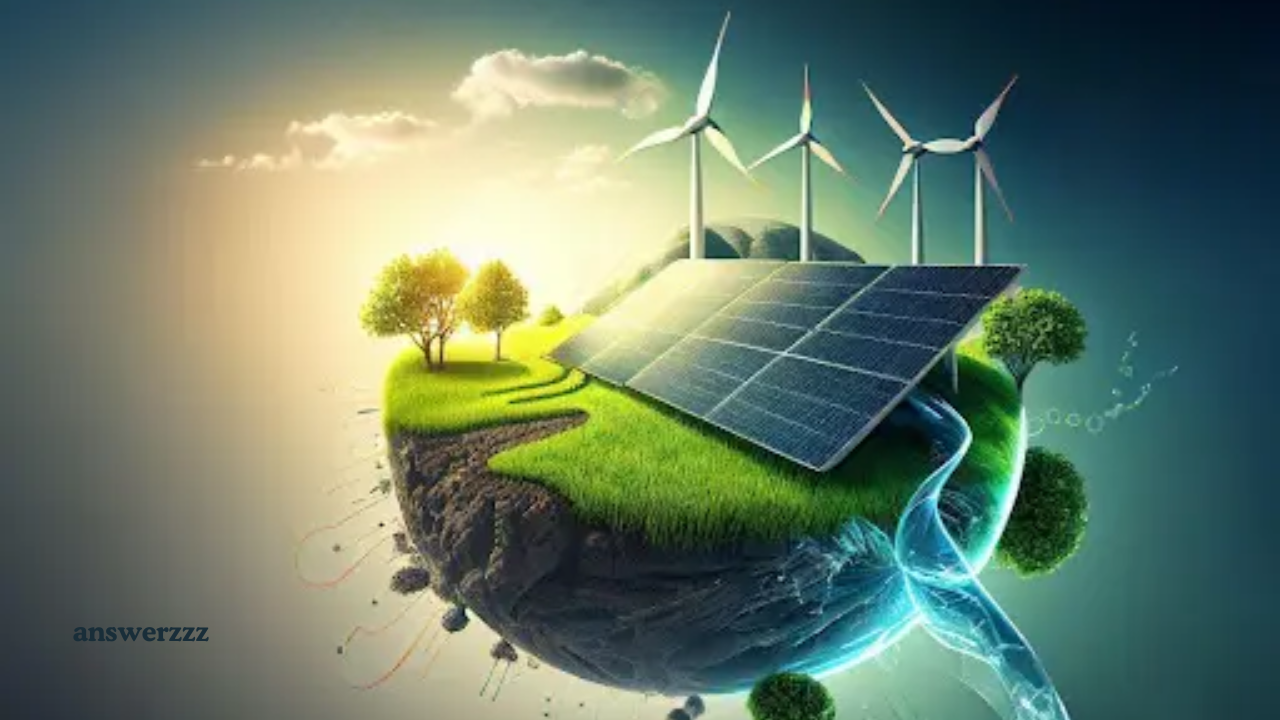As we advance into a world increasingly focused on sustainability, renewable energy technology has taken centre stage. The urgency to combat climate change, reduce greenhouse gas emissions, and transition to a cleaner energy future has led to significant advancements in renewable energy technologies. These innovations have the potential to reshape the way we produce, store, and consume energy in the coming years. By 2026, we can expect to see many of these breakthroughs driving a greener, more sustainable global economy. In this article, we explore the top 10 breakthroughs in renewable energy technology that promise to lead us to a more sustainable future.
1. Next-Generation Solar Panels: Perovskite Solar Cells
Solar energy has long been a leading contender in the renewable energy race, but recent advancements in solar panel technology, particularly perovskite solar cells, are set to revolutionize the industry. Perovskites are materials that can absorb light and convert it into electricity, with remarkable efficiency. While traditional silicon-based solar panels have dominated the market, perovskite solar cells have shown the potential to outperform them in terms of efficiency and production costs.
The breakthrough with perovskite solar cells lies in their ability to be manufactured at a lower cost and with greater flexibility. These cells can be made using simple processes, allowing for more widespread production and reduced prices. Researchers have also improved their stability, making them more suitable for long-term use in various climates. By 2026, we can expect perovskite solar panels to be a mainstream option for residential, commercial, and industrial applications.
2. Floating Wind Turbines: Harnessing Offshore Energy
Offshore wind farms have been a growing source of renewable energy, but floating wind turbines are taking this technology to the next level. These turbines are designed to float on the surface of the ocean, harnessing the powerful and consistent winds found at sea. Unlike traditional fixed-bottom turbines, floating turbines can be installed in deeper waters, where winds are stronger and more consistent, thus increasing their energy output.
Revolutionizing Health Tech: The Impact of AI in Diagnostics and Treatment
Floating wind turbine technology is still in the early stages of deployment, but several pilot projects are already underway. By 2026, the cost of floating wind farms is expected to decrease, making them more competitive with other energy sources. The ability to install wind turbines farther offshore means that they will have less impact on local ecosystems and communities, making them a promising solution for large-scale clean energy production.
3. Green Hydrogen Production: A Clean Fuel for the Future
Hydrogen has long been seen as a potential clean fuel for various sectors, from transportation to industrial processes. However, most hydrogen production methods rely on fossil fuels, which offset its environmental benefits. Green hydrogen, on the other hand, is produced using renewable energy sources, such as wind or solar, through a process called electrolysis.
Recent breakthroughs in electrolysis technology have made green hydrogen production more cost-effective and efficient. By 2026, we can expect green hydrogen to become a key player in decarbonizing industries like steel, cement, and chemicals, where direct electrification is challenging. Additionally, green hydrogen can be used in fuel cells to power vehicles, ships, and aeroplanes, reducing reliance on fossil fuels and furthering the transition to a carbon-neutral economy.
4. Advanced Energy Storage: Solid-State Batteries
Energy storage has always been a critical challenge in the renewable energy sector. Solar and wind energy are intermittent by nature, meaning they cannot provide a constant supply of power without effective storage solutions. While lithium-ion batteries have been the go-to solution for storing renewable energy, they have limitations in terms of efficiency, cost, and lifespan.

Enter solid-state batteries, which promise to revolutionize energy storage. These batteries use a solid electrolyte instead of the liquid electrolyte found in traditional lithium-ion batteries. Solid-state batteries offer several advantages, including higher energy density, longer lifespan, and improved safety. They also have the potential to be much cheaper to produce. By 2026, solid-state batteries are expected to become more commercially viable, enabling greater adoption of renewable energy and electric vehicles.
5. Advanced Geothermal Energy: Enhanced Geothermal Systems (EGS)
Geothermal energy has been a reliable source of renewable energy for decades, but its potential is far from fully realized. Traditional geothermal power plants rely on naturally occurring hot springs or volcanic activity to generate energy. However, these sites are often geographically limited, restricting the widespread adoption of geothermal energy.
Enhanced Geothermal Systems (EGS) represent a breakthrough in geothermal technology by creating artificial reservoirs in hot rock formations that are otherwise inaccessible. EGS uses hydraulic fracturing to create fractures in the rock, allowing water to flow and generate heat for energy production. This technology opens up vast new areas for geothermal energy development, especially in regions where natural geothermal resources are scarce. By 2026, EGS could significantly expand the global geothermal energy market.
Blockchain Beyond Cryptocurrencies: Innovations to Watch in 2026
6. Solar Paint: A Revolutionary Energy Source
Imagine if the surfaces of our buildings, vehicles, and even roads could generate clean electricity simply by being painted. This is the potential of solar paint, an emerging technology that uses light-absorbing materials to generate electricity. Solar paint contains compounds similar to those used in perovskite solar cells, and researchers are working on improving its efficiency and durability.
The key advantage of solar paint is its versatility. It can be applied to almost any surface, turning ordinary objects into energy generators. While still in the experimental phase, solar paint could become a cost-effective and easy-to-deploy solution for renewable energy generation by 2026. This breakthrough could revolutionize urban planning and the way we think about energy generation in everyday life.
7. Biomass and Biofuels: Next-Generation Feedstocks
Biomass has long been used as a renewable energy source, but the next generation of biofuels promises to be far more efficient and environmentally friendly than previous iterations. Advances in feedstock development, such as algae and agricultural waste, are opening up new possibilities for biofuel production that are less resource-intensive and more sustainable.
Algae, in particular, is gaining attention for its ability to produce biofuels at a much higher rate than traditional crops. It can also be grown on land that is not suitable for food production, reducing competition with food crops. By 2026, biofuels derived from algae and other innovative feedstocks could provide a significant portion of the world’s transportation fuel needs, reducing our reliance on fossil fuels and curbing emissions.
8. Artificial Photosynthesis: Mimicking Nature to Create Energy
Artificial photosynthesis is an exciting and ambitious technology that seeks to mimic the natural process by which plants convert sunlight into energy. By replicating this process, researchers aim to create a sustainable way to produce hydrogen or other fuels directly from sunlight, water, and carbon dioxide.
Exploring the Future of 6G Networks: How It Will Change Connectivity
Recent advancements in artificial photosynthesis have made the process more efficient, and researchers are now focusing on scaling it up for commercial use. By 2026, artificial photosynthesis could become a viable method for generating clean fuels at a large scale, helping to decarbonize sectors like aviation and heavy industry.
9. Carbon Capture and Storage (CCS): Capturing Emissions for a Cleaner Future
Carbon capture and storage (CCS) is a technology that captures carbon dioxide emissions from power plants and industrial sources and stores them underground, preventing them from entering the atmosphere. While CCS has been in development for years, recent advancements have made the technology more efficient and cost-effective.
Innovations in CCS include direct air capture, which involves removing CO2 directly from the atmosphere and using captured carbon for commercial purposes, such as producing synthetic fuels. By 2026, CCS could play a crucial role in achieving global climate goals by reducing emissions from sectors that are difficult to decarbonize.
10. Smart Grids and Digital Energy Systems
The future of renewable energy depends not only on new technologies for generation but also on smarter ways to distribute and manage energy. Smart grids use advanced digital technologies to monitor and manage electricity flow, enabling more efficient use of renewable energy. These grids can balance supply and demand in real time, incorporate energy storage systems, and integrate diverse energy sources such as solar, wind, and hydro.

As the grid becomes more interconnected and digital, renewable energy will be more seamlessly integrated into the overall energy mix. By 2026, smart grids will play a crucial role in optimizing energy use, reducing waste, and ensuring a reliable supply of clean power.
A Greener, More Sustainable Future
The breakthroughs in renewable energy technology outlined above are just a few examples of the innovations that are set to transform the energy landscape by 2026. From advanced solar panels and floating wind turbines to green hydrogen and smart grids, the future of energy is looking brighter and cleaner than ever before. These technologies hold the promise of not only reducing our reliance on fossil fuels but also mitigating the effects of climate change and creating a more sustainable world for future generations.
As research and development continue, the cost of renewable energy technologies is expected to fall, making them more accessible to consumers and businesses alike. With continued innovation, collaboration, and investment, the transition to a renewable energy future is well within reach. The next few years will be critical in realizing the full potential of these technologies and ensuring that we achieve a greener, more sustainable 2026 and beyond.




